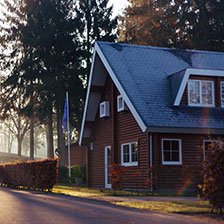Investing in a new build property or investing in something more established boils down to personal preference and subjective tastes. Celebrating the glorious rich history from builds constructed long ago may be at the forefront of most people’s desires, however new build properties can present opportunities you may not have ever considered.
The UK offers a diverse choice of healthy investment opportunities, therefore it is easy to see how our economically influential country is becoming more popular for property investors and first-time buyers.
Tighter Regulations
Building regulations have become increasingly stricter over recent years. New builds now come with a 10-year structural warranty, providing an obvious advantage over older properties in terms of controlling the wear and tear and protecting your home from any major structural defects.
New build properties are often fitted with brand new features and fittings, resulting in less chance to make allowances for the potential cost of repairs and ongoing maintenance which can make a huge difference in what you can afford. New build projects are a savvy choice for investors looking to build and diversify their buy-to-let portfolio’s. Taking advantage of an up and coming major city is a fantastic opportunity to secure lucrative investments with robust rental yields and an unparalleled chance of capital appreciation.
RW Invest, property specialists based in Liverpool offer a diverse portfolio of new build opportunities across the UK that are experiencing compelling regeneration schemes, RW suggests,
“There is a clear influx on new build developments to meet the rising demands of Britain’s burgeoning population. New builds are saturating the housing market and capturing the attention of first time buyers, homeowners and buy-to-let investors.”
The UK’s Northern Powerhouse initiative helps new build developments steal the limelight in the current property market and overshadow the plethora of existing builds across the country, ensuring it is at the centre for regeneration and investment.
Energy Efficiency Revolution
Restoring an older property still falls short of the optimum energy efficiency a new build property is capable of. At no competition, it is almost impossible for the two types of builds to compete with one and other in terms of efficiency. New build properties tend to be designed with energy performance considerably higher than its predecessors saving owners hundreds of pounds per year in energy bills.
Modern building methods have been acquired to help prevent damp, double glazed window units to improve insulation and cavity walls to provide savings on energy, all on a long-term basis designed to significantly reduce monthly outgoings.
According to Energy Performance Certificate data, more than 80% of new builds have the top A or B rating for energy efficiency compared to just 2.2% of existing properties, equating to new build home-owners spending on average £443.30 a year, which is well under half of the £1,072 the owner of an older home is predicted to spend. Evidently, new build homes are far cheaper to run and aim to significantly reduce your household carbon footprint.
Flexibility in New Builds
Quite often there can be a small premium when purchasing new build property, leaving them slightly more costly than other older properties, however government schemes are in place to aid this slight step in cost. First-time buyers can take advantage of a Help to Buy scheme, only requiring a 5% deposit to secure a new build as opposed to higher deposits needed for older property.
Purchasing off plan instils more confidence in prospective buyers, as with older properties uncertainty can arise concerning the other people in the chain. Chains are eliminated in new build property, leaving more scope for removing uncertainty posed by older builds.
Buying New Build Property in the UK



